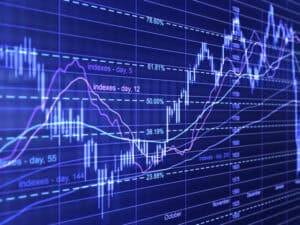BCE (TSX:BCE)(NYSE:BCE) stock’s juicy yield of 5.9% is super attractive in a low interest rate environment, where the five-year Canadian bond yield is only 0.40%. If you do the math, that’s almost 15 times the income!
Why did I choose to compare BCE’s dividend yield with the five-year bond yield? Well, for stock investing, it’s generally a good idea to have a stock investment horizon of at least three to five years. Telecom stocks are also sometimes used as a bond proxy because of their stability.
If it’s a good company, even if you overpay a little for the shares, you should still get decent returns in the period.
The blue-chip dividend stock is especially suitable for the consideration of income-focused or retired investors.
Is BCE stock overpriced right now? First, let’s see how its business has performed recently amid the pandemic crisis.
BCE stock’s recent results
Year to date, BCE stock has only fallen about 7%, which is not too bad.
In the first half of the year (H1), BCE’s revenue fell 5% to just under $11 billion against H1 2019. Its adjusted EBITDA, a cash flow proxy, dropped 4% to more than $4.7 billion, while its adjusted EBITDA margin remained robust by increasing marginally to 43.2%.
During the period, the big telecom’s adjusted earnings per share fell 16% to $1.42, which translated to a payout ratio of 117%. The top- and bottom-line results were impacted by lower consumer and business activities due to the pandemic. The company offers essential services like the internet. So, its recent return of equity was 12.9%.
Despite more people working from home, BCE boasts networks that operate with 99.99% overall availability, providing reliability and speedy internet access to its customers. Additionally, it enabled working from home for approximately 90% of its employees, including about 12,000 call centre agents.
Is BCE stock’s dividend safe?
BCE’s high payout ratio (based on adjusted earnings per share) suggests an unsustainable dividend. However, the leading Canadian telecom’s free cash flow generation remains strong, which provides plenty of coverage for its dividend.
In H1, BCE generated $2.2 billion of free cash flow, while it only paid out $1.5 billion as dividends, which indicates a payout ratio of approximately 69% of free cash flow.
Additionally, BCE has a sturdy financial position with an investment-grade S&P credit rating of BBB+. At the end of Q2, it had $5.4 billion of liquidity and a current ratio that was roughly 50% stronger than it was a year ago. Its net debt to EBITDA ratio is also at the same level of 2.9 times, which is reasonable.
Therefore, BCE’s high-yield dividend is safe.
Is BCE stock expensive or cheap?
At about $56 per share at writing, BCE stock trades at about 16 times its normal price-to-earnings ratio. The stock could be cheaper, but it’s not super expensive given its quality and stability.
Analysts have an average 12-month price target of $60.60 on the stock, which represents near-term upside potential of 8%.
BCE Dividend Yield data by YCharts.
BCE’s 10-year dividend yield history indicates the stock is fairly priced. If it yields 6.5%, though, it’d be a compelling buy-the-dip opportunity. Based on its current annualized payout ratio of $3.33 per share, it will reach the target yield of 6.5% at $51.23 per share. Notably, BCE normally declares dividend hikes in Q1, which is not too far off into the future.
The Foolish takeaway
BCE stock is reasonably priced right now and offers a yield of 5.9%. If it drops close to the $51 level for a yield of about 6.5%, it’ll be more attractive.









